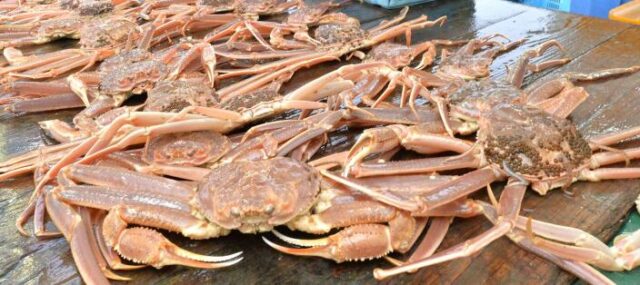Ten billion snow crabs vanish in the Bering Sea.
ScienceNews reports that from 2018 to 2021, an estimated 10 billion snow crabs disappeared from the eastern Bering Sea, sending shock-waves through the scientific community.
The dramatic population decline, linked to a marine heatwave, has significant implications for Alaskan fisheries and raises concerns about the broader impact of climate change on Arctic marine ecosystems.
Researchers, who had previously speculated about the cause of the missing crabs, now point to a marine heatwave as the likely culprit, causing a mass die-off by inducing starvation in the crustaceans.
Cody Szuwalski, a fishery biologist at the United States National Oceanic and Atmospheric Administration’s Alaska Fisheries Science Centre, describes it as a “fishery disaster in the truest sense of the word.” On average, snow crabs contribute approximately $150 million to Alaskan fisheries annually.
However, in the 2021–2022 crabbing season, revenue plummeted to around $24 million, underscoring the economic impact of the disappearing crabs. With marine heatwaves becoming more frequent due to human-induced climate change, the future of such fisheries and the broader Arctic marine ecosystems is uncertain, as highlighted in a report earlier this year.
The new research not only sheds light on the cause of the mass die-off, but also provides insights that can help fishery managers anticipate and prepare for similar events in the future.
Szuwalski emphasises the importance of quick and effective disaster aid to affected fishers during such crises. The typical habitat for snow crabs, characterised by cold, Arctic waters, was disrupted by a marine heatwave in 2018 and 2019.
The heatwave prevented the usual formation of sea ice, resulting in the absence of the cold-water pool essential for the crabs. Consequently, the crab population collapsed, leading to a significant decline in their numbers.
Szuwalski and colleagues employed computer models to analyse temperature data, combining it with population surveys, fishing catch numbers, and lab experiments. The results highlighted two main causes behind the sudden collapse: higher water temperatures and an initially dense crab population.
While higher water temperatures may not have directly killed the crabs, they likely triggered starvation. Snow crabs in laboratories have demonstrated survival in waters up to 12°C, suggesting that the indirect impact on their food sources might have led to their demise.
The data revealed that the crab population initially boomed in 2018, reaching historic highs due to favourable ocean conditions for newborn crabs around 2010. The crabs occupied a smaller area than normal, leading to overcrowding. The subsequent marine heatwave increased their metabolism, doubling their calorie requirements.
The crowded crabs struggled to find enough food in the reduced foraging area, resulting in lower body weights compared to the previous year.
Christopher Harley, a marine ecologist at the University of British Columbia, underscores the unprecedented nature of the event, stating, “It’s just yet another example of something we didn’t expect, but now we have to live with.”
The repercussions are likely to persist, with estimates suggesting at least four years before crabs of a fishable size reappear in the eastern Bering Sea.
As marine heatwaves continue to pose threats to marine life, particularly in northern latitudes, scientists face the challenge of preparing for events that have never occurred before. Harley notes the lack of attention given to the secondary effects of marine heatwaves on cold-blooded creatures, emphasising the urgency of understanding the broader implications for Arctic ecosystems.








